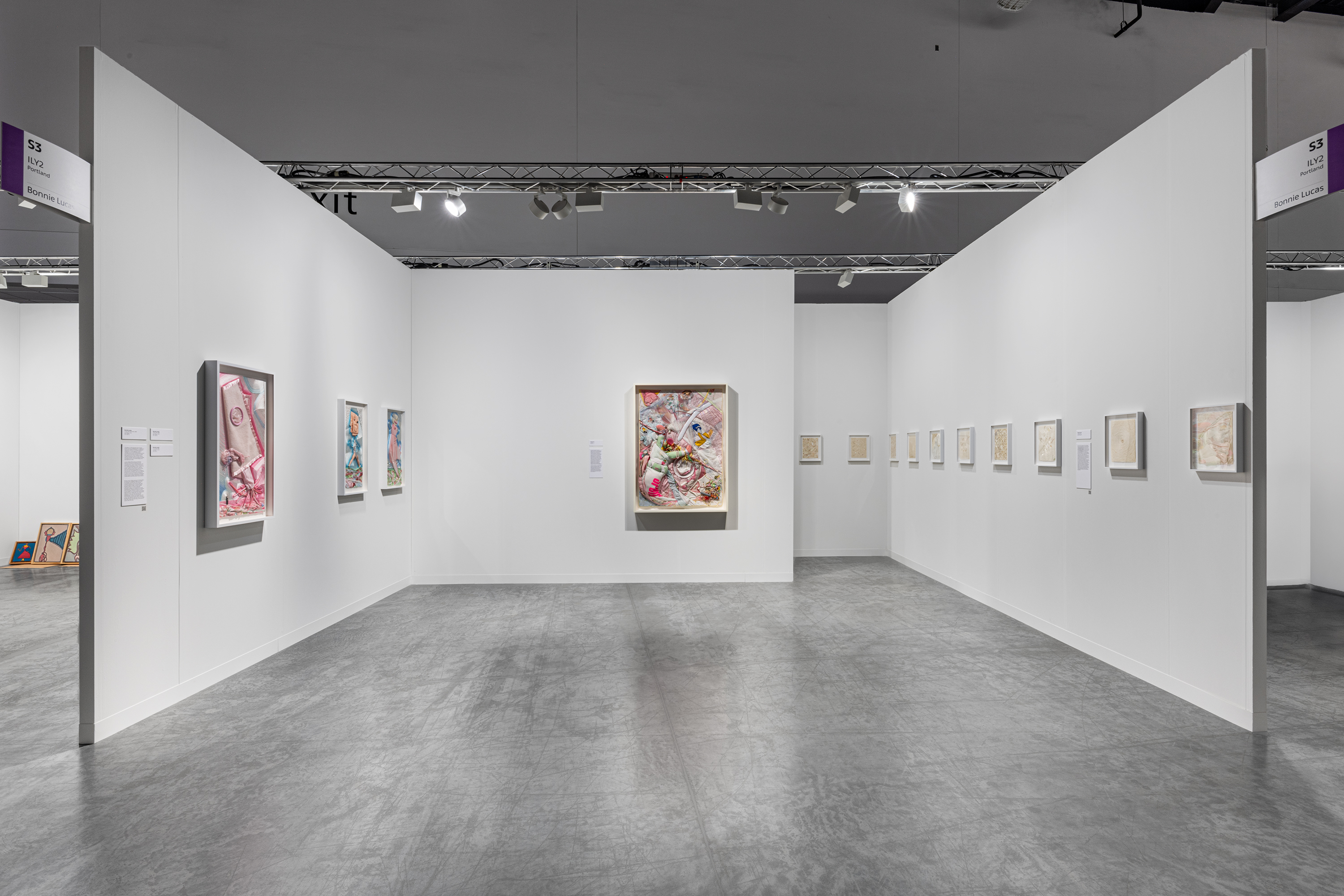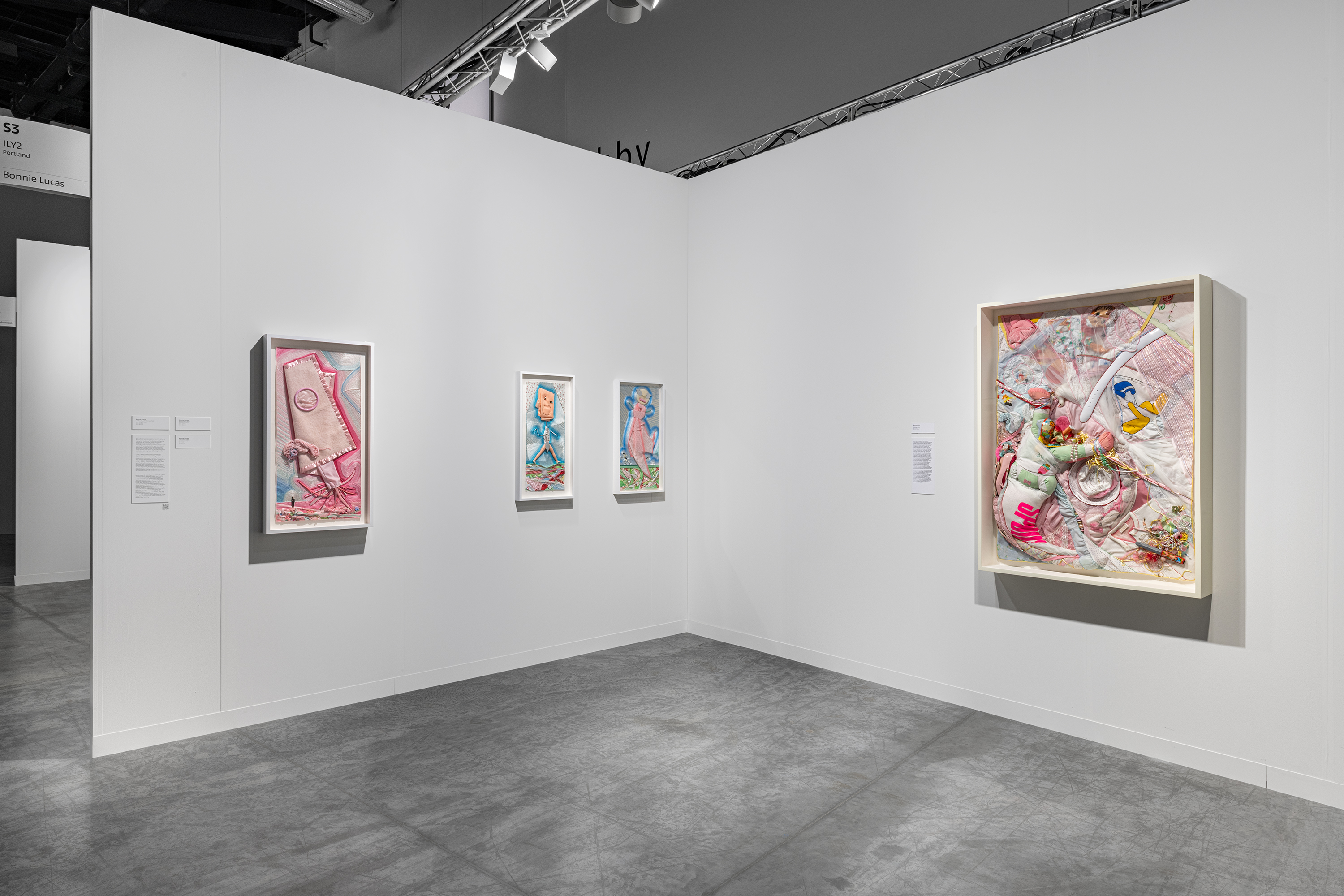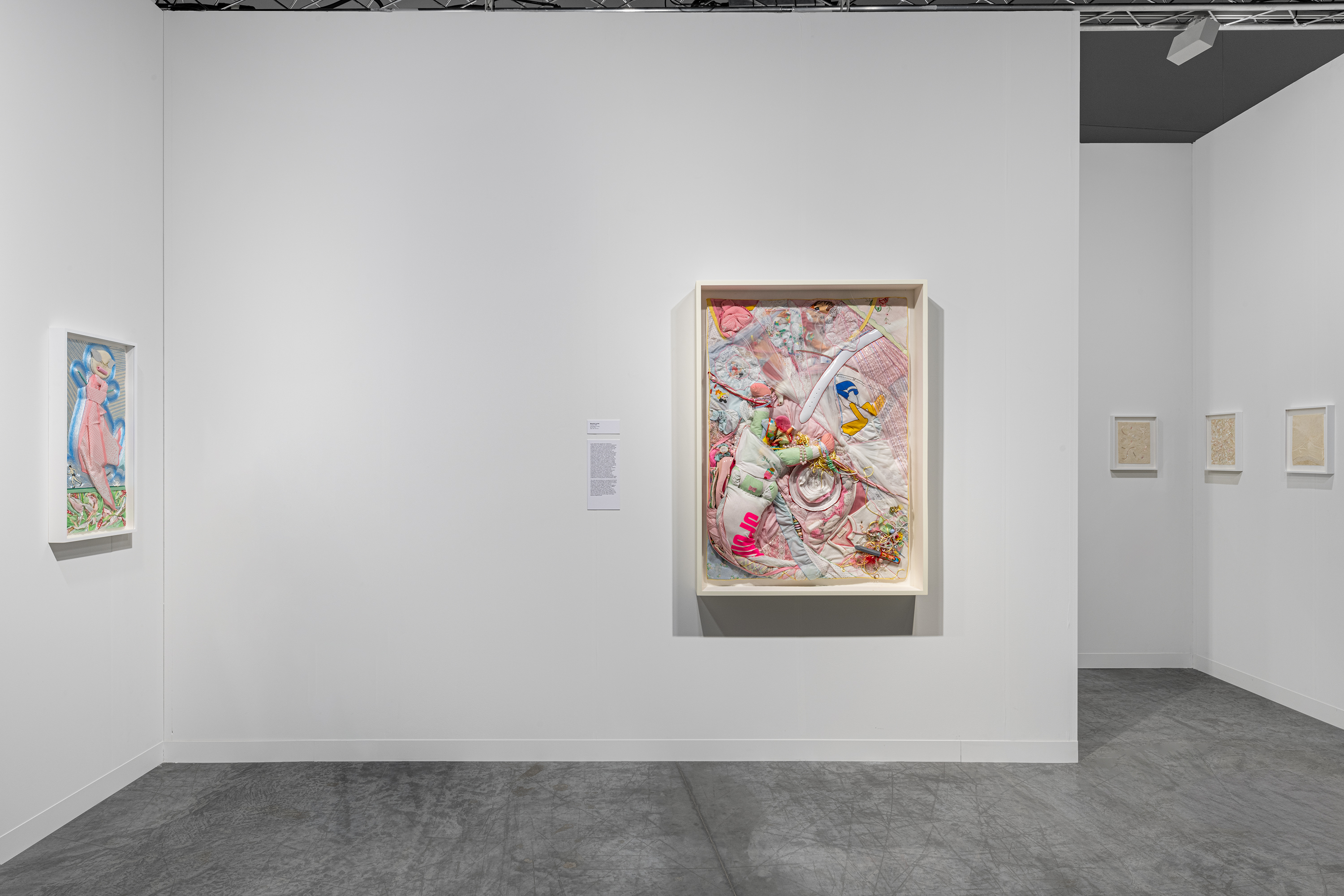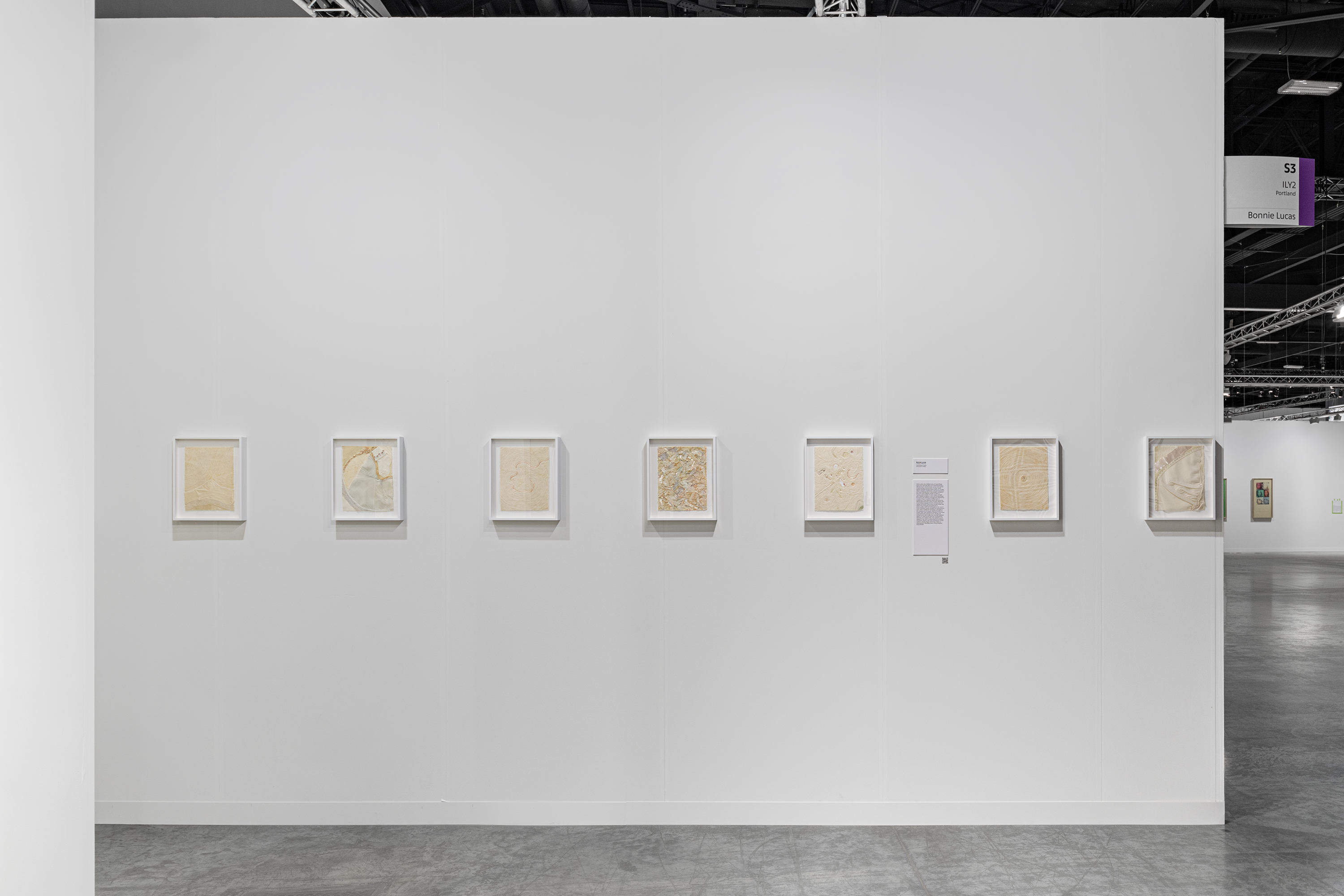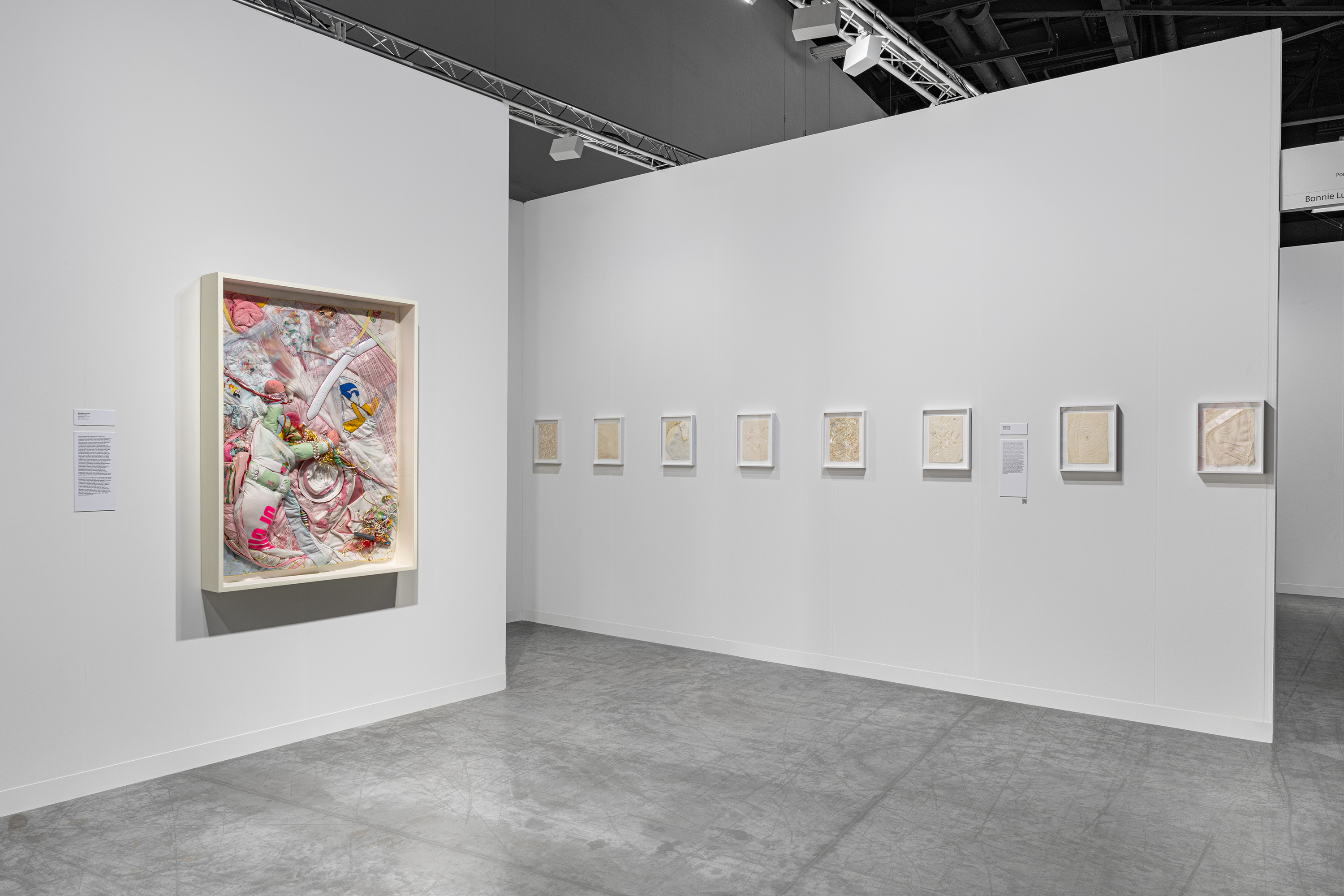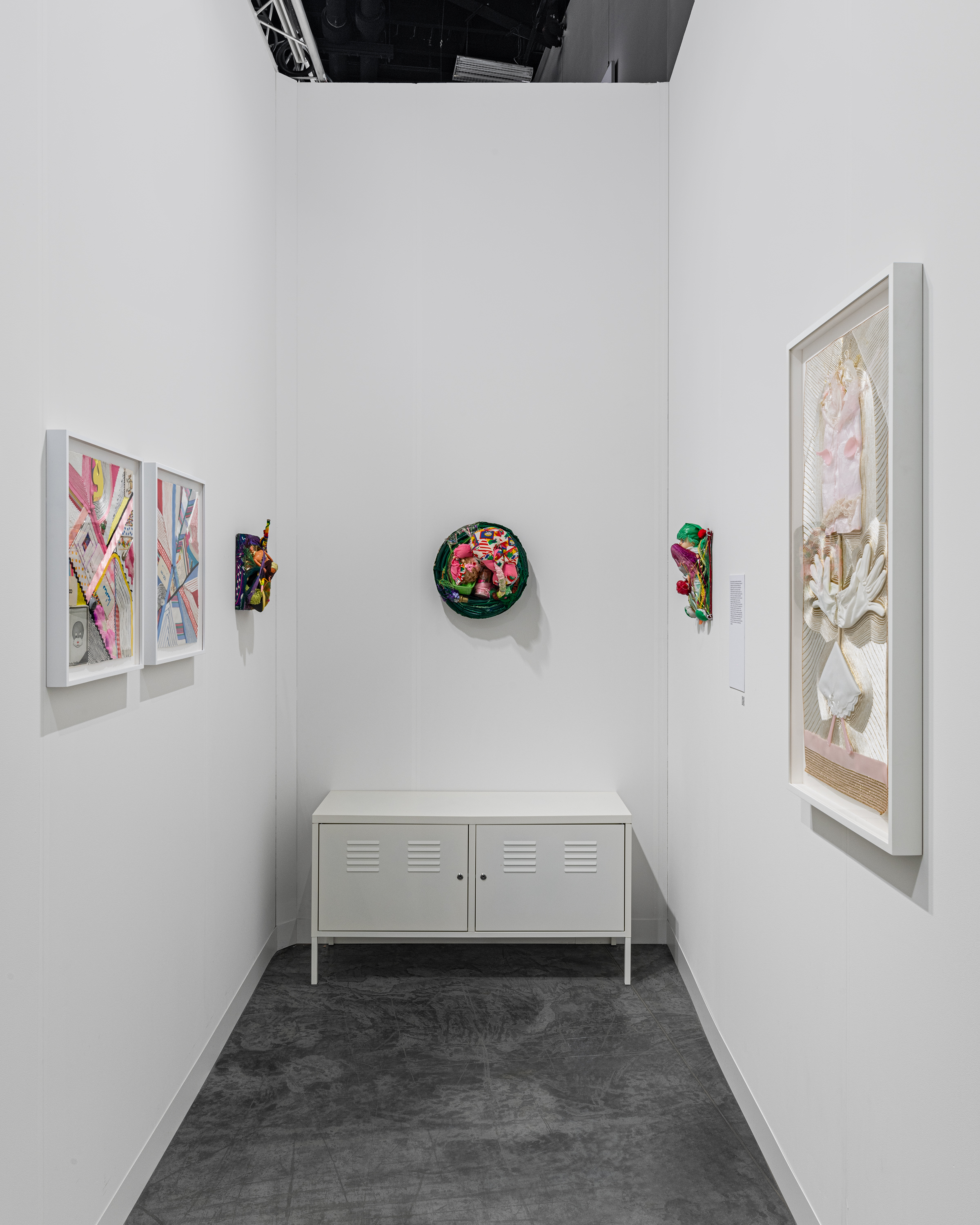ILY2 is pleased to announce its participation in Art Basel Miami Beach 2024, with a solo presentation by the New York-based artist Bonnie Lucas. ILY2 is featured within the Survey Sector, which is dedicated to galleries highlighting artistic practice of historical relevance. This year’s fair takes place October December 4-8, 2024 in Miami, Florida.
Throughout a career spanning over 40 years, Bonnie Lucas has steadfastly built an aesthetic of inquiry into “traditional” femininity, reconfiguring avalanches of consumer goods into totemic meditations on commodification, pathos, sensuality, and perversion. Exhibiting Bonnie Lucas’ work in the Survey Sector this year at Art Basel Miami Beach is part of ILY2’s ongoing work to amplify the fifty year career of Lucas, a female artist who has been active for decades but largely overlooked, and very much still emerging in the international art world.
Born in 1950, Lucas is deeply influenced by romanticized depictions of postwar domesticity and the concurrent rise of mass-produced products. ILY2’s Art Basel Miami Beach booth will showcase a series of hand -sewn and -beaded assemblages on fabric, made out of a trove of cheap dross (satin bows, costume jewelry, clothing, and toys) that Lucas has taken apart and meticulously reconfigured. Pink, a recurrent color in the exhibited works, escapes its presumed lack of substance with Lucas’ treatment of color as a source of emotional and historical resonance. From cotton candy hues and dissected precious objects emerge Frankenstein’s monsters of girly dreams and their profane transmutations.
The artist demonstrates her conceptual and formal interests in her assemblage works. Making prudent use of fabric, figurative elements appear in unusual scenes that are as exuberant as they are unsettling. In Spoiled, 1986, central to the gallery’s booth presentation, the artist employs a 1980s t-shirt spelling out SPOILED, woven into a cornucopia spewing an overflow of toys from between the splayed-open and bound legs of a doll. This large-scale artwork was created, as are all of the works from the late 1970s onward, in the artist’s 400 square foot loft in New York City’s Bowery neighborhood.
Elsewhere, an Untitled series of assemblage works from the late 1970s are characterized by a delicate touch and showcase Lucas’ more sparse, muted leanings. Sinuous lines of white-toned thread meander through strewn pieces of cut fiber, ribbon snippets, pastel beads, and garment pieces, as if sewn directly onto a seamstress’ workbench. One such work collages swaths of fabric in nursery-quiet shades of cream, beige, and light pink. Viewers recognize a sock and an elasticated bra band in the abstract arrangement, bisected by a scrap of linen. In another Untitled work, a scattering of tiny iridescent pearls fall across the stitched grounds near a piece of green ribbon with a red thread wrapped around it, reminiscent of a needle and thread. Other pearls remain inside their plastic bag, treasured and preserved. A preoccupation with the tactile gets to the core of Lucas’ aesthetic inquiry, treading the shaky ground upon which “traditional” femininity is situated. In one assessment, the series reflects the skill of a master tailor, with fastidious attention to technique and material. But perhaps more critically, the Untitled works also bridge the culturally-freighted objects of a girl’s youth with the compositional dexterity of a mature artist. This revelation, as it appears in her work, is understated but profound, and leaves viewers with hazy impressions of their mother’s steady fingers hemming a dress, or attempting to mentally locate a long-forgotten baby blanket.
By suturing highly accessible, sentimental items into new forms, Lucas simultaneously critiques and celebrates the manufactured femininity that persists through time. She is comfortable with disagreement, at once honoring the tender memories nestled in the deepest recesses of our minds, and the critical distance required to examine them. For Lucas, artmaking has countered the immense pressure placed on women in the second half of the twentieth century to be sweet, desireless, and diligent mothers, wives, and workers. The acts of disfiguring and reconstructing assert a certain autonomy of the imagination, one that seeks to expand the boundaries of one’s world and self, rather than surrender to societal pressure. In this spirit, the exhibited works suggest a holistic view of identity and a sensibility that was radically ahead of its time. Neither earnest paeans to conventional girlhood nor total rejections of kitsch, Lucas’ thought-provoking work has perhaps never been more relevant to a contemporary audience.
